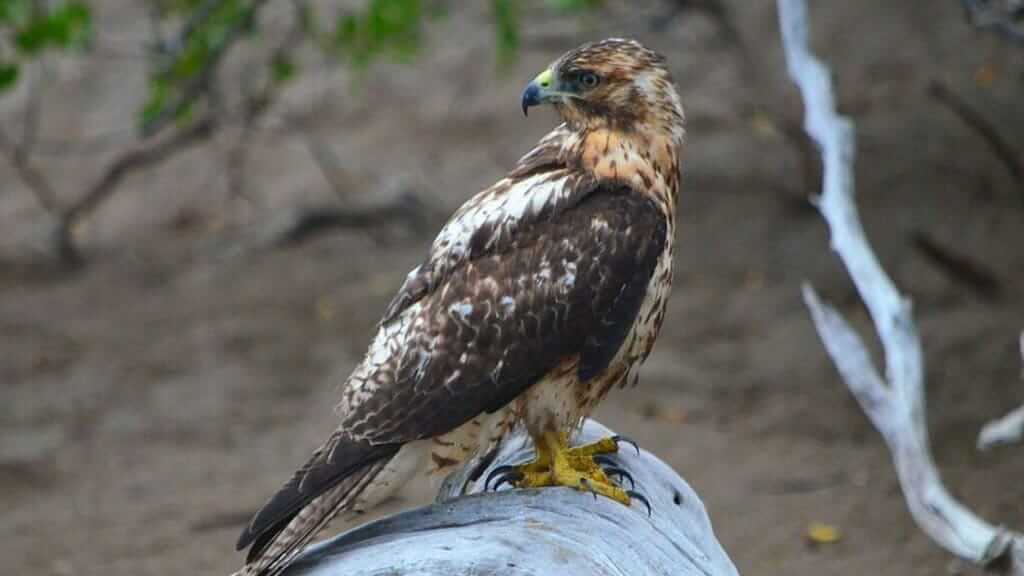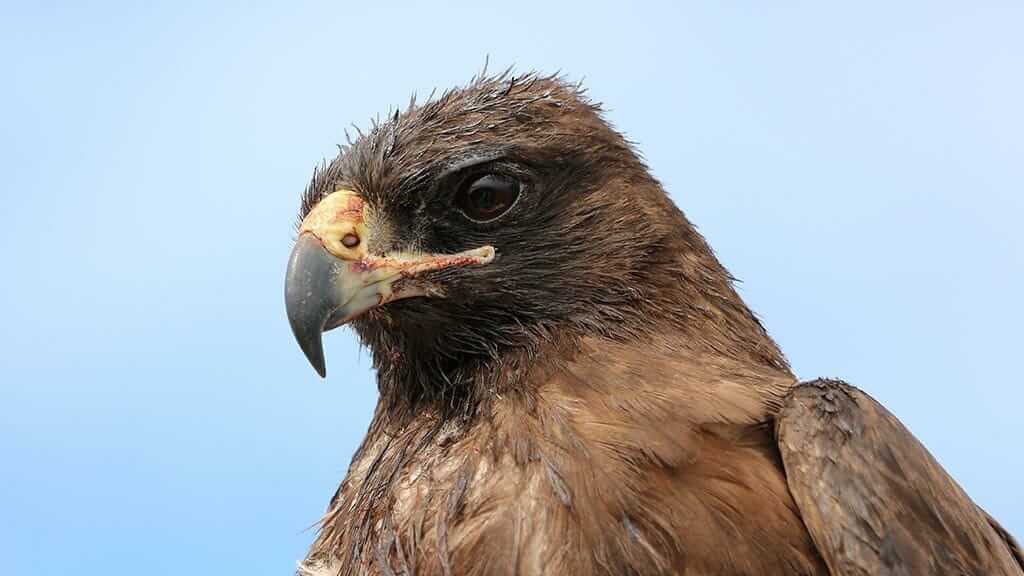GALAPAGOS HAWK
Welcome to the top of the Galapagos Islands food chain! The Galapagos Hawk is an exceptional hunter, feared by all other land species including iguanas, snakes, and turtle hatchlings. The Galapagos Hawk is often spotted soaring majestically across Galapagos skies or sitting atop cactus plants. The Galapagos Hawk is one of the rarest birds of prey on the planet with an estimated population of just 150 breeding pairs. They are also an endemic species to the Galapagos Islands meaning that you can only find the Galapagos Hawk here. If you are fortunate enough to spot one then do take some time to appreciate this magnificent Galapagos bird.
Read on for everything you ever wanted to know about the Galapagos Hawk. Where and when can visitors see them? How to recognize a Galapagos hawk? What conservation work is underway to protect Galapagos Hawks? Plus lots more raptor-related fun facts along the way.
SECURE YOUR GALAPAGOS TRAVEL
Get a FREE personalised quote todayThe Galapagos Hawk is an ENDEMIC SPECIES.
Conservation Status: Vulnerable.
Galapagos Hawk Scientific Name: Buteo Galapagoensis.
How to See a Galapagos Hawk?
With such a small Galapagos Hawk population alive today one might imagine that they are rather difficult to spot. In fact, this is not the case as they can be spotted by the majority of Galapagos visitors. As the largest land bird and only raptor on the islands, they are quite unmistakable. They have little to no fear of humans and they tend to nest in open sites that may be visible to visiting tourists.
So whether you take a Galapagos island hopping land tour or a full-on archipelago cruise, there’s always a good chance of a Galapagos Hawk sighting.
WHERE to see Galapagos Hawks?
Galapagos Hawks can be found on all major Galapagos islands, with the notable exceptions of Baltra, Daphne, Floreana, San Cristobal, and North Seymour where they have become extinct.
WHEN to see Galapagos Hawks?
The Galapagos hawk is a permanent resident of the islands. They nest all year round and can be spotted during any month of the year.
Contact us for a FREE TOUR QUOTE with no obligations. Happy Gringo is a leader in Galapagos Islands Travel since 2004, with over 10k happy clients.
GET FREE ADVICE
From a Galapagos destination expert todayThe Galapagos Hawk - Everything You Need To Know
Galapagos Hawk Description
The Galapagos Hawk is closely related to North America’s red-backed and white-tailed hawks. At Galapagos, this splendid bird is easily recognizable as it’s the only raptor species on the islands.
Adults Galapagos hawks are dark brown/black in color, while adolescents are a lighter cream brown to provide camouflage until they grow old enough to protect themselves. Like all raptors they have sharp beaks and talons, and keen eyesight which make them such feared hunters.
In size, a Galapagos Hawk usually weighs between 650 and 850 grams, with an impressive wingspan of up to 1.2 meters. The female Galapagos hawk is larger than the male, which is in fact a common trait in birds of prey.
Galapagos Hawk Habitat
They are highly adaptive birds, capable of nesting on lava shelves, in trees or shrubs, and in the highlands or lowlands of the Galapagos. Despite their adaptability to such a diverse habitat range, they remain vulnerable to habitat loss caused by humans or invasive species.
Galapagos Hawk Reproduction & Behavior
Galapagos hawks follow an unusual breeding system known as cooperative polyandry. Male hawks are monogamous, but a single female can mate with multiple males during her breeding period. The same group of males will then help to raise the chicks and take turns incubating eggs & feeding the hatchlings.
Watching Galapagos hawk courtship can be a spectacular treat for visitors. A courting couple will fly high through the sky together, often diving towards land while crisscrossing each other’s path. Sometimes males can become quite aggressive during this process, even appearing to dive-bomb the female bird.
Galapagos Hawk nesting season is rather undefined as they are capable of nesting at any time of year. Nests are large affairs, sometimes as much as 4 feet in diameter. Galapagos hawk eggs are incubated for 38 days, with 1 to 3 eggs per clutch. Hatchlings then need to be looked after for up to 2 months before they can leave the nest. They will not be able to return to the breeding ground until at least 3 years old when ready to mate for themselves.
Galapagos Hawks Diet
What does the Galapagos hawk eat? Their diet is diverse – being the Apex land predator they can hunt pretty much anything that comes their way. Invertebrates (centipedes and locusts) and small rodents are an easy catch, while their menu also includes lava lizards, baby iguanas (land & marine), sea turtle and land tortoise hatchlings, other birds, and Galapagos snakes. They are also happy to pounce on an easy meal if they spot carrion.
Galapagos hawks are active hunters during the day, making them easier to spot at different Galapagos visitor sights on tours and cruises. Hawk hunting groups form, flying together as 2 or 3 individuals, allowing for more effective prey sightings, and diverse attack strategies.
Fun Galapagos Hawk Facts
• The Galapagos Hawk is listed as a vulnerable species on the IUCN Red List and has even become extinct on some islands. Given that they have no natural predators on the Galapagos Islands, why is the Galapagos hawk endangered? Unfortunately, both habitat loss and competition for food sources with invasive species such as cats have caused hawk numbers to decline. The Galapagos hawk is also a sensitive creature and will abandon their nest if interfered with by humans.
• There is no current Galapagos Hawk conservation work underway, although this species is indirectly helped by the National Park removal of invasive species and habitat protection. They have also been protected under Ecuadorian law since 1959, making hawk hunting illegal at the Galapagos islands.
• The Galapagos hawk is one of the most recent species to have arrived on the Galapagos islands. Scientists estimate that their original ancestors flew ashore approximately 300,000 years ago. This may sound like a long time, but compare them to the Galapagos Finch who flew this way some 2–3 million years ago!
The #1 Trusted
Galapagos Travel Agency
If you enjoyed this post, then check out more about Bird Species in Galapagos.
In Conclusion, the Galapagos Hawk is a bird you will likely cross paths with on the islands. This attractive raptor is an elegant flyer, a powerful hunter, and an important part of the Galapagos land food chain. Galapagos hawks show little or no fear of humans, so visitors can often get close enough to appreciate their pretty plumage and fearsome talons. Remember that there are just 150 breeding Galapagos hawk left pairs on the planet today, so an encounter with them is a truly special nature experience!








